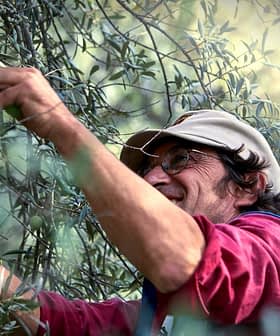A Croatian Agronomist’s Guide to Olive Tree Pruning
As the spring rapidly approaches, farmers enter a critical moment in the olive growing cycle. Pruning at the right time keeps the trees productive and healthy.
 Marijan Tomac
Marijan Tomac  5K reads
5K readsGarden shears play a significant role in determining the yield and quality of the olive harvest, according to the well-known Croatian agronomist Marijan Tomac.
As a result, when and how the olive trees are pruned is of the utmost importance for quality.
He who cuts an olive tree can make a mistake, but he who does not cut an olive tree makes a bigger one.
More than six million olive trees grow in Dalmatia and Istria. The best time to begin pruning is the second half of March or the beginning of April.
At this moment, farmers can differentiate the fruit-bearing flower buds from the tree buds, which are the start of a new branch.
See Also:Experts Offer Tips on Preparing for the Warm Season in Organic Olive GrovesPrevious to the arrival of the buds – from February to the beginning of March – Tomac recommends that farmers do not begin pruning as the olive tree reacts negatively to anything that disturbs its dormancy.
Pruning too early may lead to the loss of leaves, from which the tree absorbs sunlight and transforms it into energy. This is crucial for the development of flowering buds.
In addition, earlier pruning encourages vegetation, so possible cold fronts, with temperatures as low as –9 ºC in recent years, may freeze the buds and leave behind trees without fruit.
There are multiple advantages to pruning at the right time, immediately after the bud opens.
At this moment, less professional olive growers can estimate the number of flowers and thus the potential amount of fruit.
It is important that in the case of olives, unlike other types of fruit, it is impossible to distinguish the flower bud from the tree buds with the naked eye.

However, Tomac warns that pruning should not be done after the moment of full flowering. By this time, the tree has already expended a lot of energy and resources, which would be wasted by pruning too late.
Late pruning by itself does not harm the tree, but significantly reduces branches’ vegetative growth and annual growth.
Despite determining the necessary moment to begin pruning, most olive growers quickly understand how to prune effectively after a short demonstration.
Most people understand that the canopy should be thinned, opened from the middle, so there is enough sunlight. The shoots also should be shortened, and the trees should not be allowed to become too tall.
See Also:Croatian Farmers Turn to Foliar Analysis to Improve Yields and QualityUnfortunately, there are still those who leave the canopy too dense. Many olive growers cut side shoots but leave the vertical ones. This increases the height of the canopy from year to year.
“All the branches in the shade will not bear fruit,” Tomac said. “In addition, the dense canopy affects the development of peacock eye disease, the development of mead and the settlement of the soot fungus.”
He reiterates that olive trees can be pruned from the movement shoots begin to grow to full flowering. Therefore, pruning should not be rushed.
Olive growers who are less accustomed to recognizing the types of shoots should start pruning as late as possible. Then they will see which will flower or form new branches.
Therefore, growers should prepare their shears, saws and fruit wax to coat large wounds and slowly begin working in the olive groves.
Once they are pruned, the branches need to be removed from the olive groves to prevent pest infestations. Then, they can be mulched or chopped to make compost.
Josip Pavlica, the secretary of the Zadar County Olive Growers Association, said that in addition to treating the parts of the tree from which the branches have been cut using olive wax, a copper-based preparation to prevent pathogens, primarily bacteria that cause olive cancer, from entering the tree should also be applied.
Disinfection of the cutting tool is also essential.
“As soon as we prune one tree, disinfect the tool before moving on to another,” Pavlica said.
He added that proper pruning must be moderate to create an optimal ratio of wood and flower buds. Doing so preserves the trees’ growing shape, encourages the growth of native branches and leads to abundant yields of high-quality fruit.
However, Tomac said that growers who are unsure should prune anyways and learn from trial and error.
“He who cuts an olive tree can make a mistake, but he who does not cut an olive tree makes a bigger mistake,” he concluded.








